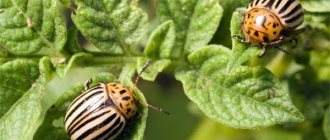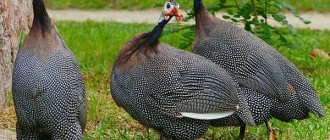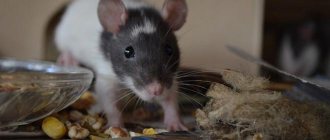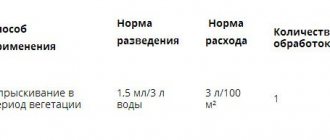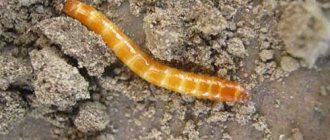Description
What is he like? What kind of beetle does it look like? What is the name of the green beetle that looks like the cockchafer? Close relatives are bronze beetles and garden beetles , with which the cockchafer can easily be confused, since they have very few external differences.
Close-up photo of the bronze
What does an adult cockchafer look like? Khrushchi belong to the Coleoptera lamellar insects, the total number of their species is 25. All varieties are large in size , reaching 3.5 cm in length.
The body is oval or widened in the middle. The color can be black or brown . Black beetles live in shady places, such as forests or plantings. Brown beetles are found in open areas well lit by the sun.
The head and pronotum often have a green tint. The elytra are brown with a red or yellow tint. The barrel is decorated with small hairs collected in white triangles.
The entire body is densely covered with small dotted lines, as well as scales and hairs of light shades. On the head and pronotum the hairs are longer and collected in longitudinal stripes. The antennae consist of 10 segments; males also have large clubs, curved and lamellar.
The scutellum is large, smooth, with a pronounced shine . In some species it is lined with small dense dotted lines, in others - with scales or hairs. Long yellow hairs grow in a thick covering on the chest .
Why is the cockchafer cockchafer? The beetle received its nickname because it always wakes up from hibernation and begins active life exclusively in the month of May, regardless of the region where it lives.
What does a June bug look like?
Most often, the name “June beetle” refers to the June beetle, which is also called the ordinary non-Khrushchev and even the non-Khrushchev-non-Khrushchev. It belongs to the order Coleoptera of the lamellar insect family. The size of an adult individual is usually from fourteen to eighteen millimeters, the color is brown, the elytra have a glossy light yellow tint. The body of the beetle is densely covered with brown-yellow hairs.
The flight period of these beetles is extended, it lasts from one to one and a half months, and occurs in June-July. Five to ten days after hatching from the pupae, the adults mate. After this, the females burrow into soft soil, where eggs are laid. The larvae that hatch from them develop in the soil. Twenty to thirty days after birth, they molt. From May to October they stay mainly in the surface layer of soil and often overwinter there. The larvae overwinter twice, going through three stages of their development. At the end of the third stage, they pupate, remaining in this phase for two to four weeks.
Kinds
Khrushchev beetle - what is it? Khrushch is the second name of this beetle. When we say May beetle, we mean any type of May beetle . In other words, May beetle (or May beetle) is a generalized name for all members of the family. The nickname was given to these insects so as not to be confused with other beetles that are not part of the May beetle family.
White
White Khrushchev - photo:
A variety whose body is covered with numerous chalky scales, making the beetle appear white. Although in fact, the body has the usual brown color. In males, scales are located much more often than in females, so it is easy to distinguish him by his lighter color tone . There are long, densely arranged hairs on the chest.
It belongs to large specimens, reaching a length of 3.5 cm. It lives in Central Asia and the steppe zone of Russia. Very common in Crimea and the Sea of Azov. Prefers sandy areas , living in the dunes of sea coasts and desert sands. Life expectancy - 3 years .
The larva feeds on many crops , including strawberries, potatoes, fruit trees and vineyards, actively eating their roots.
Oriental or wild chestnut
An adult beetle is relatively small - up to 2.9 cm. The body is elliptical-oblong, convex. The color is dark, predominantly brown with a reddish tint . The shine is not pronounced, the head is decorated with many specks.
The larva is much larger, its average size is 6.5 cm. The head is orange, the body is white, curved in the shape of the letter C. It is very voracious and polyphagous . It feeds on the roots of vegetable, field and garden crops, especially young seedlings. Often operates in nurseries and greenhouses.
Adult beetles eat the leaves of most trees , including conifers. Life cycle duration is 5 years.
Eastern view of the May Khrushchev - photo:
West
Outwardly similar to the Eastern Khrushchev, but differs in larger size , growing up to 3.2 cm in length. The body is stocky, very convex and wide at the sides. The shape is oval, elongated downwards. Coloration can vary from light chestnut to almost black or dark brown . There are light triangular spots on the sides of the abdominal segments.
On the front back there are grayish-yellow hairs; on the elytra they are sparse and lighter. The larva is a dirty yellowish hue, the head is brown, the jaws are brownish-yellow. It grows from 4.4 to 6.6 cm in length.
It feeds on the roots of trees, root crops, herbaceous plants and grain crops. Prefers young tree seedlings in nurseries, strawberries, sugar beets and potatoes.
Adults gnaw the leaves of shrubs and trees - beech, walnut, oak, alder, hazel, poplar, linden, willow, plum, pear, cherry and apple tree. It eats coniferous trees only in the absence of more tasty species.
The life cycle is 3-4 years. Distributed throughout almost the entire territory of Europe, including the European part of the CIS countries.
Western cockchafer - photo:
June or summer rootworm
The smallest species, reaching only 2 cm in length. The body is brown, densely strewn with yellowish hairs. The elytra are shiny, pale yellow. The length of the larva is no more than 4.5 cm.
They do not tolerate dampness , so they live mainly in sandy lands.
The color is dirty white, the head is brown. The larva is voracious and practically omnivorous ; when infested en masse, it can cause significant damage to plantings, especially in nurseries. The life span is 2-3 years.
Summer root gnawer - photo:
How to fight
For the purpose of prevention, it is necessary to monitor beetles throughout the summer. This way you can determine when they appear. The number of larvae is noticed by soil excavations. They must be carried out in May - June, and again in August.
Beetles should be controlled using comprehensive measures. That is, this is soil cultivation, protection of roots, destruction of already adult individuals. It is necessary to pay attention to plant care. It is necessary to dig up the ground where beetles are most common and remove weeds in a timely manner. From this video you can learn some interesting information about May and June beetles:
Traditional methods
To destroy June beetles, the soil should be treated with special infusions. You can prepare them yourself, as there are many traditional methods:
- Take 500 g of sunflower flowers or 1000 g of white acacia bark. Pour a bucket of water over any of the components and filter after 3 days.
- Add a bucket of hot water to half a bucket of poplar leaves. Place on low heat and cook for 15 minutes. Remove from heat and leave for 3 days.
- Take 300 g of wormwood and add 200 g of ash. You will also need a bucket of boiling water. Everything must be mixed thoroughly. Leave for 2 – 3 hours before use.
There are good reviews about the method, which consists of alternating an iodine solution and an infusion of onion peels. Cooking methods:
- Take a bucket of clean water, add 15 drops of iodine. To stir thoroughly. Use the mixture to water the soil around the plants.
- For preparation you will need 100 g of husk. You can take both onion and garlic. Fill with a bucket of warm water. Be sure to cover the container with a lid. Leave for 3 days. Add ½ bucket of water to the solution. Water the plant at the roots with the mixture.
To fight, you can use water with iodine
Using Traps
If a person notices a cluster of insects in a certain place, simple traps can be used. Namely:
- Installing adhesive tape. Can be purchased from flies. Install on any surface. For example, a board. You need to place the tape in the place where there are the most insects.
- You can make the device yourself. To do this you will need a glass or bottle; they must be made of plastic. It is first recommended to dilute the water with jam or kvass, that is, with something sticky. Fill the bottle with the mixture. Place near a constant accumulation of insects. If beetles get in, they must be removed.
Chemical substances
There are special substances to reduce the population of larvae. They are called chemicals. Most Popular:
- Initiative;
- Antikhrushch;
- Zemlin;
- Aktara;
- Bazudin.
Chemicals are only suitable for areas with flowers. Use in vegetable beds is not recommended.
It is also fashionable to use special means – Antikhrushch
Biological drugs
Biological products help cope with beetles that eat the roots of vegetables and berries. The most popular are Metarizin, Nemabact.
External structure
Head
The mouth and sensory organs are placed on it. The mouth consists of jaws and lips - above and below. On the lower ones there are organs of taste and touch in the form of small palps. At the top of the head on the sides are the eyes, which have a complex facet structure.
Above them are antennae ending with 7 plates. The latter are the organs of smell. The entire head is pressed into the prothorax, causing it to tilt downward and not rotate laterally .
Breast
Divided into 3 sections - rear, middle and front. Each has a pair of legs (6 in total), and there are wings . On the dorsal side, the chest is hidden behind the elytra . They protect the soft covers of the back and thin hind wings from damage.
The front wings are much stiffer, so they do not require protection. With its feet, the cockchafer excels at clinging to branches and shoots and them well
The legs are not designed for dexterous walking on flat surfaces, so in such places the beetle moves slowly and awkwardly .
Abdomen
It has a fixed connection to the chest and includes 8 segments. From the back on the sides of the abdomen there are respiratory openings .
External structure of the May Khrushchev - photo:
The harmfulness of the June bug
In fact, the common beetle - the June beetle, the photo of which is presented below - despite its deceptively cute “fluffy” appearance, is far from harmless. By feeding on the roots of woody plants, it causes significant harm to them.
Its larvae can severely damage the roots of seedlings of various tree species in nurseries, especially if the care of young plants is not thorough enough. Very often, the population of the June beetle is found together with others, in particular, the May beetle, which makes their harmful effect intensify.
In order to prevent outbreaks of mass reproduction of June beetles, they should be visually monitored throughout the summer, determining the intensity of flight in a given period and tracking the time of emergence of adult individuals. The population density for larvae of each age is determined by soil excavations, which are carried out in the first half of summer and then in August.
Measures to combat June beetle must be comprehensive. This includes the protection of the root systems of young plants when planting forest crops, and the chemical treatment of the soil with special compounds, and the fight against adult individuals during flight years using chemicals. It is also recommended, if possible, to dig deep into the top layers of soil in places where the June beetle is common and to collect larvae. The combination of these control methods usually gives good results.
Internal structure
Respiratory system
It is made up of many tubes with branches (tracheas). They deliver air entering the body through the spiracles to other systems.
Digestive system
The upper jaws bite off parts of the leaves, and the lower jaws grind them. The food then passes into the esophagus and from there into the stomach . It is equipped with teeth made of chitin to grind food. The remainder of the digestion process occurs in the intestines , and processed food is excreted through the anus.
Excretory system
A bunch of tubes closed at the top, the bases extend into the intestines. Their task is to filter metabolic products and convert them into crystalline substances.
Circulatory system
Blood does not take part in respiration; it only carries nutrients to the organs, carrying excretory products away from them. Moves due to the functioning of the heart.
Nervous system
Primitive, contains a peripharyngeal ring and an abdominal chain. The brain is a collection of nerve cells fused together.
Reproductive system
How does the cockchafer reproduce? The female has a pair of ovaries , which connect to form an oviduct. It brings the eggs formed in the ovaries out after maturation. To receive the seed there is a special reservoir - seminal receptacle .
The male has testes , they pass into the vas deferens and connect into a single canal for ejaculation.
insect eggs
What do cockchafer eggs look like? May beetle egg - photo:
Compared to the eggs of other insects, they are quite large - their length is 3 mm, width 2 mm. The color is dirty white, the shape is oval, widened on the sides.
The egg goes through a development cycle of about 30 days . The presence of unfavorable conditions extends it to 45-50 days. Eggs tend to gradually harden , beginning development under soft covers.
The June beetle is a pest that begins its activity while still a larva.
We have all known the June beetle since childhood. This is a green insect that has a fairly powerful shell, tenacious paws and makes a loud buzzing sound when flying. Many of us don’t even realize that these cute and bright-looking beetles are real pests, ready at any moment to feast on the leaves of the flowers that every gardener carefully grows in his or her garden.
The June beetle is called so because it begins its activity in the corresponding summer month. Then, towards mid-summer, it disappears. It would seem that his life is short, but during this time he manages to cause very noticeable damage to the garden. It is no coincidence that it is considered one of the main pests of the garden plot: all its harmful activities are aimed at flowers. In mid-summer, plants need special care. Sunlight and heat are at their peak, and sometimes watering alone is not enough to make the flower feel comfortable. Especially when its young leaves are eaten by the June beetle - an insect that is merciless to plants in their difficult period. Hence, it is recommended that you make every effort to get rid of it. Otherwise, you risk being left without your favorite dahlias, chrysanthemums or, for example, lilacs.
However, it is not only the June beetle itself that can spoil the life of your garden. Its cubs, while still on the larval stage, also take part in this. Only if adult individuals pay their attention to the petals and leaves, then their offspring - to the root system. When you fertilize the soil, loosen it and water it, you create a favorable environment not only for the plants themselves, but also for pests. June beetle larvae are located on the upper part of the root system and stick to its surface. Beneficial substances rise from the bottom of the roots and are intercepted by these pests. The appearance of these larvae, which the June beetle leaves as offspring, is quite unpleasant. They are white and thick curved creatures that vaguely resemble caterpillars. Of course, when there are few of them, they cannot cause significant harm to plants. Sometimes their activities go unnoticed. But if a large colony has bred on your site, then the fight
we need to start with it immediately.
Many gardeners probably know what a June beetle looks like. The photo of this insect once again emphasizes the power of their shell. Despite the fact that biologists divide these beetles into several species, they all have approximately the same appearance. Their diet is also similar. The only difference is in reproduction. Some larvae are very harmful to plants, and they reproduce in the root system of flowers or ornamental bushes, while others thrive in rotten wood. Therefore, the last babies will not harm your flowers. But in any case, June beetles are real pests, and you should get rid of them using special means.
Stages of development
The female lays eggs - this is the first stage. The second begins after the larva . It is divided into three generations - baby, young and adult larvae.
A fully developed cockchafer larva enters the third stage of development - the pupa. She makes a cradle for herself shallow in the ground, developing for about a month. The pupa looks like an adult beetle curled into a C shape (see photo below). The color is quite intense - orange.
Adults emerge in late summer or fall and soon enter a dormant state for the winter. Waking up in the spring, they begin to reproduce .
How long does the cockchafer live? Its lifespan depends on the type of Khrushchev. If the June one can live for 2-3 years, then the Eastern Khrushchev can live for as much as 6 years.
Phases of development
The beetles become active in June or July, and their flight lasts up to 1.5 months.
The behavior of the pest depends on its habitat. Thus, those living in the forest eat tree leaves or pine needles during daylight hours. Here they choose not only trees, but also thickets of tall grass and bushes. Adults living in the steppe prefer to hide in the soil during the day. Their activity becomes more active only at dusk, but continues throughout the night. As a rule, the males take flight, and the females wait for them on the plants.
Mating of beetles begins a week after additional feeding. Females lay eggs in the soil, each capable of producing from 20 to 30 eggs. The period of embryo development depends on temperature and environmental conditions, and in different regions it lasts different times: from 4 to 6 weeks.
The larva lives in the upper layers of the soil and eats plant roots. It goes into the deep layers of the soil to spend the winter. The larva overwinters once or twice.
The pupation period begins in early May, and at this time the larva rises closer to the surface, to a depth of approximately 15 cm. Pupation takes from 1 to 2 months, so some adults may appear in July.
What does it eat?
What do cockchafers eat? The larvae eat various roots , and the adults eat foliage .
Is the cockchafer a predator or not? Despite its impressive size, exceeding most other insects, the cockchafer poses no danger to them at all, eating exclusively plant foods .
May beetle pupa - photo:
Appearance and features
Photo: What Khrushchev looks like
Khrushchev has three pairs of articulated, very hairy limbs. The first pair of beetle legs originates from the anterior thorax, the second pair from the mesothorax, and the third pair from the metathorax. Three rather sharp teeth are clearly visible on the tibiae of the forelimbs.
Khrushchev's eyes are complex, convex in shape, allowing them to look at the world around them from a wide angle. The antennae of the Khrushchev consist of a dozen segments (nine short and one long) and are necessary for its sense of smell. The antennal flagella somewhat resemble a fan, and in males the size of the “fan” is much more impressive than in females. Actually, males differ from females in the larger size of their fan and body.
The cockchafer's mouthparts are of the gnawing type, which allows it to feast on young leaves and shoots without much difficulty.
Along the edges of the mouth there are oral appendages (three pairs):
- the first pair are stings;
- second pair - lower jaw;
- the third pair is the lower lip.
The upper lip looks like a small but rather wide plate covering all this wealth from above. When eating, the beetle has full use of both the upper and lower jaws, and the palps help push food deeper into the mouth.
Interesting fact: Khrushchev is often confused with the bronze beetle, although in fact these are two different species.
What are the harms and benefits of Khrushchev?
Maliciousness
Why is the cockchafer dangerous?
The larvae spoil the roots of various plants, especially damaging young seedlings. Adults actively eat leaves. It is known that large populations can completely destroy a woodland or garden .
Fortunately, effective methods have now been developed to combat the cockchafer.
Benefit
Some sources claim that the cockchafer has healing qualities . It helps cure impotence, pulmonary tuberculosis, uterine cancer, scrofula and radiculitis.
Harm and protection from June pests
Gardeners and summer residents have every reason to dislike summer insects. Khrushchev actively eat the crown of fruit trees and the foliage of shrubs, such as raspberries, currants, and gooseberries. The larvae destroy the underground parts of plants and prevent them from developing normally.
To prevent such extensive sabotage, competent site owners take measures to effectively destroy beetles. They dig up the surface layer of the earth in search of larvae. Tree foliage is treated with special products. They use traps, chemicals, and preparations based on biocomponents to safely combat uninvited voracious guests.
Natural enemies of cockchafers
Photo: Large cockchafer
May beetles are tasty prey for many animals. Insectivorous birds, bats. Khrushchi are a favorite “dish” for starlings, thrushes, rooks, magpies, and jays. They eat not only adults, but also larvae. For this reason, many gardeners try to attract birds to their plots. They help get rid of the pest in a short period of time and without the use of hazardous substances. Bats are also active destroyers of harmful insects.
In one season, a pair of starlings can independently destroy about eight thousand beetles, beetle larvae and other common garden insects.
Small and medium-sized predators. May beetles are eaten by badgers, hedgehogs, and moles. So, to combat these pests, gardeners are strongly recommended to populate gardens with hedgehogs. Larvae and adult beetles form the basis of the diet of this animal.
Pets. Domestic cats and dogs are excellent hunters of Khrushchev. They first catch insects, then they can play with them, and only then eat them. This food is very healthy for pets. May beetles contain a lot of protein, which is easily absorbed by the animal body. People. The most dangerous enemy of the cockchafer is humans.
People use a variety of methods to rid their lands of this pest. Chemicals and folk recipes are used. People try to attract birds and animals that feed on beetles to their territory.
Popular message topics
- Insects of the meadow
Almost every person imagines a meadow as something beautiful and green. There is a lot of grass and plants growing. Nobody thinks that animals and insects play a very important role for the existence of these meadows. These beautiful places are home to - Traditions of the Udmurt people
The Udmurts are another people inhabiting the territory of Russia, which has a rich history and culture. The Udmurt people were able to form after the Proto-Perm ethnic community collapsed. The Udmurts chose wonderful - Poland
The emergence of the Polish state is rooted in ancient legends, which say that the leader of the Lech tribe, a Pole by nationality, once saw an eagle's nest on an oak tree. He perceived this event as an omen
